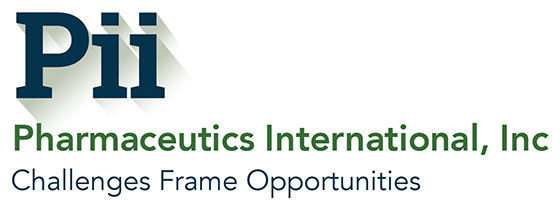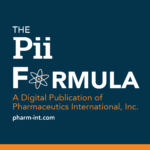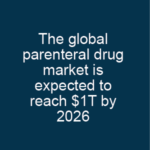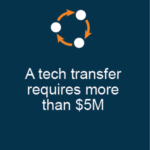3 BTN, Early-Stage Drug Development, October 23
Early-Stage Drug Development - 3 By The Numbers - October 2023

 Global formulation development outsourcing will jump to $51.9B in 2031
Global formulation development outsourcing will jump to $51.9B in 2031
The global formulation development outsourcing market size was valued at $22.5 billion in 2021 and is projected to reach $51.9 billion by 2031, growing at a CAGR of 9% from 2022 to 2031, according to Allied Market Research.1 The formulation development outsourcing market demand is growing rapidly owing to increasing number of clinical trials and regulatory requirements. And, the need for specialized knowledge in formulation development and regulatory compliance can be met through outsourcing, as these service providers have extensive experience and expertise in the field. The report goes on to state that demand for biopharmaceuticals, advanced drug delivery systems, and complex dosage forms have fueled the growth of the formulation development outsourcing market.
By services type, pre-formulation -- narrowing down potential leads by evaluating their physicochemical and biological characteristics – will experience a significant increase in outsourcing. And the market for outsourcing formulation development will benefit from the increasing number of clinical studies, according to the report.
By route of dosage form, the injectable segment dominated the global formulation development outsourcing market share in 2021. Researchers expect this to hold true through 2031.
Reference
 40-50% of clinical failures are due to lack of efficacy in early development
40-50% of clinical failures are due to lack of efficacy in early development
If drug candidates in the preclinical stage are also counted, the failure rate of drug discovery/development is even higher than 90%. Analyses of clinical trial data from 2010 to 2017 show four possible reasons attributed to the 90% clinical failures of drug development: lack of clinical efficacy (40%–50%), unmanageable toxicity (30%), poor drug-like properties (10%–15%), and lack of commercial needs and poor strategic planning (10%).
Since 40%–50% of clinical failure of drug development is due to lack of clinical efficacy, tremendous effort has been devoted to improving drug efficacy in preclinical and clinical studies. In the target validation process, the disease targets have been rigorously confirmed using genetic, genomic, and proteomic studies in cell lines, tissues, preclinical models, and human disease models. However, true validation of any new molecular target in human disease is challenging before a drug can be successfully developed since biological discrepancy among in vitro, in disease animal model, and human disease may hinder the true validation of the molecular target's function. This discrepancy makes the development of the first-in-class drugs difficult.
Generally, drug development follows a standard process, which includes vigorous genetic and genomic target validation, high-throughput screening (HTS) of drug candidate molecules, rigorously drug optimization for activity and drug-like properties, preclinical efficacy and toxicity testing, biomarker-guided selection of patients and optimal clinical trial designs. In the past few decades, each step of the above drug development has been rigorously optimized and validated, while many successful strategies have been rightfully implemented in the drug development process to select the best drug candidates for clinical studies. Despite this validated effort, the overall success rate of clinical drug development candidates remains low at 10%–15%.
Reference
 Preformulation outsourcing will experience 9.2% CAGR from 2021-2031
Preformulation outsourcing will experience 9.2% CAGR from 2021-2031
The formulation development segment held the major share in 2021, accounting for more than half of the global formulation development outsourcing market revenue. This is because formulation development plays a crucial role in creating stable and patient-acceptable drug preparations and forms. The preformulation segment, on the other hand, will showcase the fastest CAGR of 9.2% from 2021-3031.1 This is because in preformulation, the physicochemical qualities of the drug materials are described, which drives the research process.
Preformulation intermediate is used for direct compression, which comprises active substance and excipients. A key area to watch for are preformulation intermediates, which are a combination of substances that are used as a raw material for producing pharmaceutical products. Growing demand for the following applications will continue to have a direct impact on the growth of preformulation intermediates:
- Oncology drugs
- Non-steroidal anti-inflammatory drugs
- Cardiovascular drugs
- Anti-diabetic drugs
- Neurology drugs
- Musculoskeletal drugs
References
Talk to a Pii Scientist
About Pii
Pharmaceutics International, Inc. (Pii) is a US-based contract development and manufacturing organization (CDMO) located in Hunt Valley, Maryland. The experienced scientists, engineers, and staff at Pii pride themselves on adroitly employing a phase appropriate method of drug development for the prudent use of their customer’s resources as they solve challenging problems. In addition to offering end-to-end development services, Pii manufactures a variety of dosage forms to include complex parenteral drugs and has a wealth of analytical testing capabilities. Its Hunt Valley campus has four aseptic suites with lyophilization capabilities. Our talented professionals stand ready to help!




